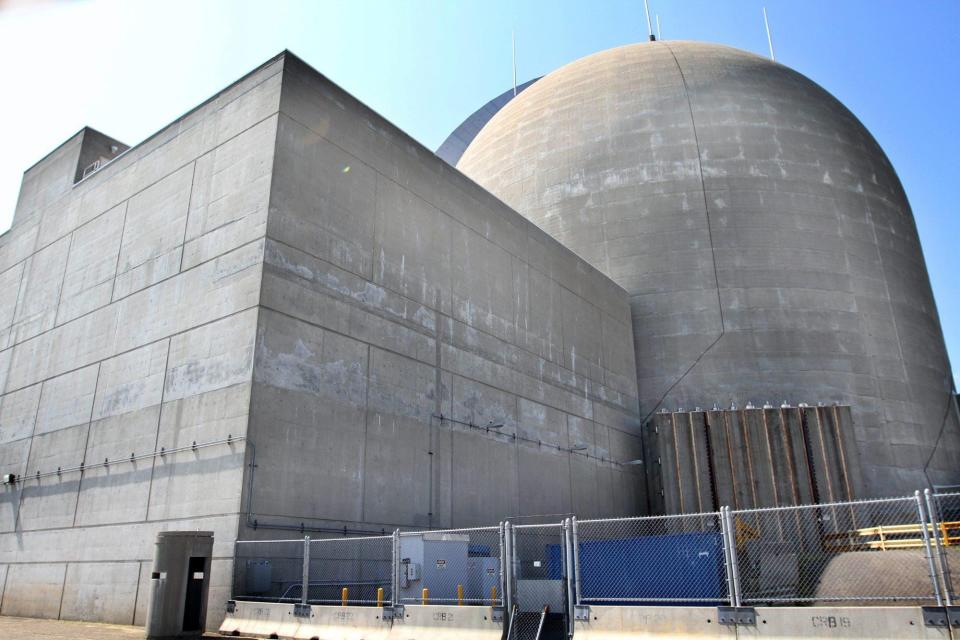How human error at Seabrook nuke plant caused chaos. Councilor shares false alarm details.
SEABROOK — The wrong button was pushed. While the results of an investigation aren't expected for a week or two, that's the explanation one state leader received for the Seabrook nuclear power plant emergency alarm being inadvertently activated Tuesday.
Janet Stevens, a Republican Executive Council member from Rye, released information Friday from a meeting she had a day earlier with Seabrook nuclear plant leaders. Stevens said she was seeking answers for "gross mishandling of the inadvertent nine-siren alarm triggering."
Stevens said she learned the inadvertent test siren alarm was "triggered by a siren technician at the nuclear plant ... and the siren technician activated the PA key on the siren control panel — which is located one row directly above the 'silent test' key."
The false alarm broadcast over PA that could be heard for miles stated: “Attention. Attention. There is a problem at Seabrook nuclear power station. The beaches are closed. Leave the beach area at once and turn on your radio for more information."

Many people did leave beaches in the Hampton area, according to local police, and some residents drove around in cars urging people to evacuate the beach and local neighborhoods before learning there was no emergency.
Stevens said plant leaders told her "once the PA key was initiated, the system was locked and prevented the technician from stopping the announcement." The meeting included Brian Booth, the plant's site vice president, she said.
'People panicked': False alarm triggered at Seabrook nuclear power plant. What to know
Silent testing of the siren alarm system is conducted every two weeks in accordance with NRC regulations, Stevens said.

Stevens said she was told by Seabrook Station officials that the siren/alarm technology at the nuclear plant and other plants nationally is about 50 years old, calling that fact "unacceptable."
In a prepared statement, Stevens said she is "troubled by the lack of a timely response by (Seabrook nuclear power plant)" and "the lag in real-time notification to the public."
Shaheen urges investigation and NRC is getting involved
Sen. Jeanne Shaeen pointed to both the false alarm and the response, calling the incident "a breakdown in communications" between the plant, state and local officials.
Shaheen urged a full review in a letter to John Ketchum, president and chief executive officer of NextEra Energy, the plant owner. The emergency alarm went off Tuesday morning, warning many in the area that there was a problem at the plant and advising them to evacuate the vicinity.
Shaheen to NextEra CEO: Seabrook nuke plant alarm caused chaos, response is 'insufficient'
"This caused chaos and left police, fire and state and local officials with few answers," Shaheen, a Democrat, wrote in the letter. "I am deeply concerned with the insufficient communication during and in the aftermath of this inadvertent alarm."
The state Homeland Security and Emergency Management agency and NextEra Energy put out statements Tuesday saying the alarm was false more than 30 minutes after beachgoers in nearby Hampton and Rye said they heard announcements at about 11 a.m. about the beaches being closed because of a problem at the plant.
Stevens said the Nuclear Regulatory Commission will be involved in the investigation.
Potential solutions for Seabrook plant
Stevens said solutions were discussed during her meeting with nuclear plant officials.
She said plant leaders "acknowledged the need to upgrade the system to IPAWS - Integrated Public Alert & Warning System (Amber alert)" with the ability to target the message to impacted communities.
Stevens also said New Hampshire has the ability to launch this system and the Seabrook nuclear plant will "conduct future silent tests once the investigation is completed, and a corrective action plan is in effect."
Massachusetts better prepared than NH?
State Rep. Peter Somssich, D-Portsmouth, commented on the false alarm in a prepared statement, saying, "this incident highlights the fact that unlike Massachusetts, New Hampshire has no independent monitoring but must depend on information from Seabrook Station."
He pointed to the work done by C-10, an independent organization with a mission to 'monitor and advocate for the safety of Seabrook Station nuclear power plant in order to protect public health and the environment in Massachusetts, New Hampshire, and beyond."
Preston Xanthopoulos: Seabrook Station false alarm reveals useless emergency alert system
Somssich said Massachusetts has "contracted with C-10 to provide it with immediate 24/7 monitoring service. While such services are available to New Hampshire as well, our state so far has not made use of this opportunity. In the case of a true emergency, such information could be critical."
Social media: Community reacts to 'inadvertent' nuclear plant alarm: 'Opposite of a relaxing vacation'
The plant is located a few miles from the Massachusetts border, about 40 miles north of Boston and 10 miles south of Portsmouth. It has operated since 1990.
Material from the Associated Press is used in this report.
This article originally appeared on Portsmouth Herald: Seabrook nuclear plant false alarm: Councilor explains how it happened

